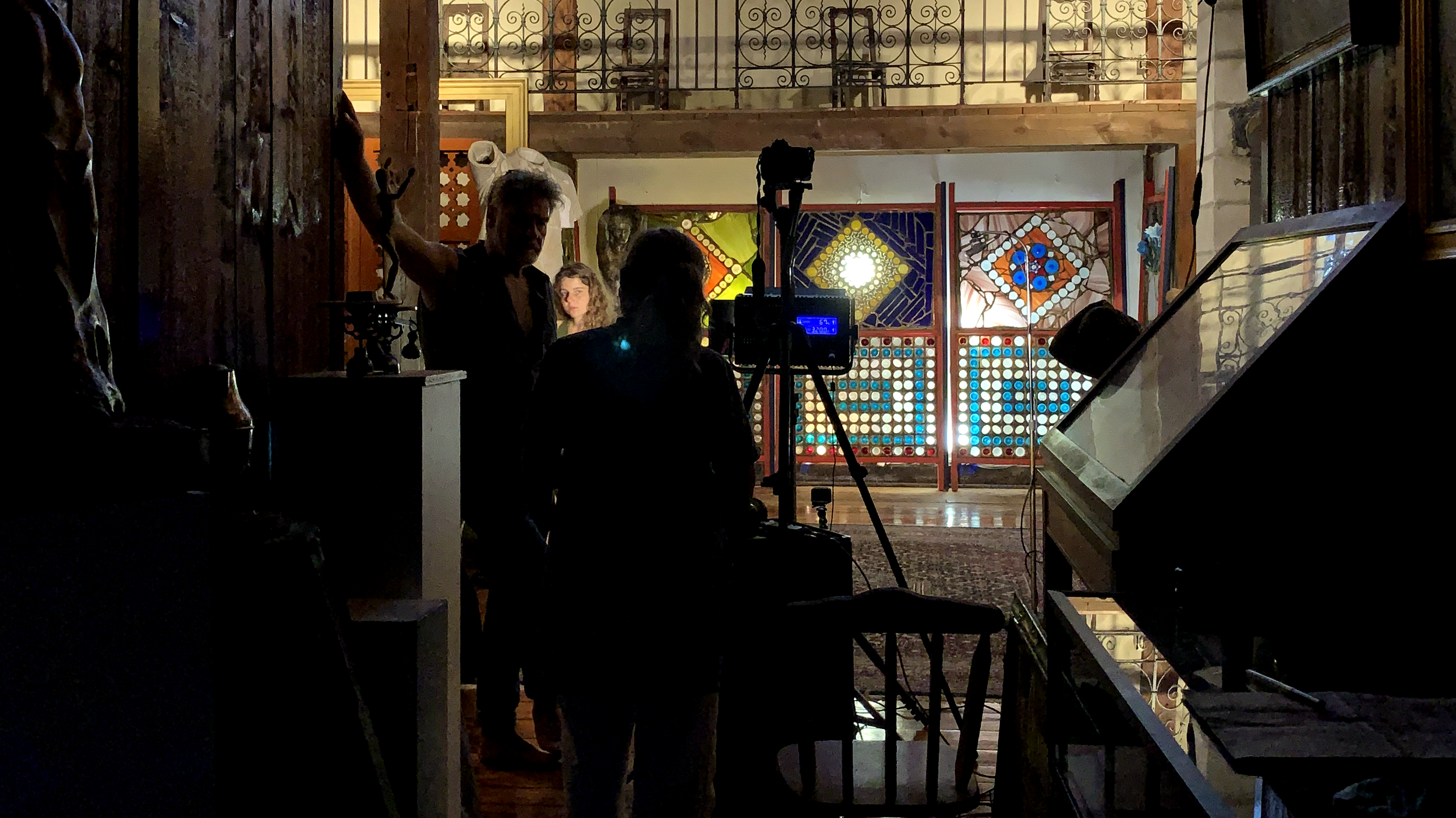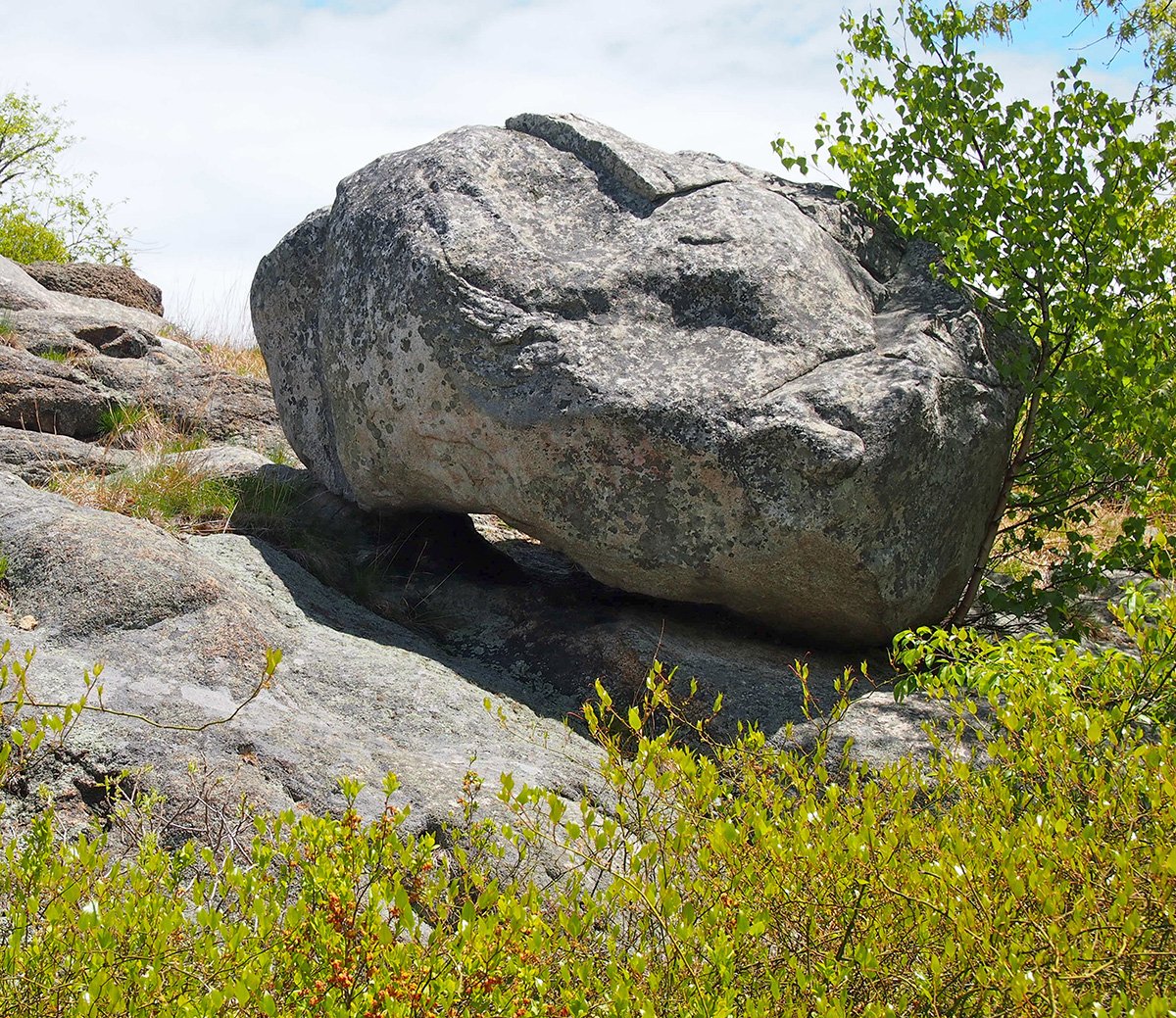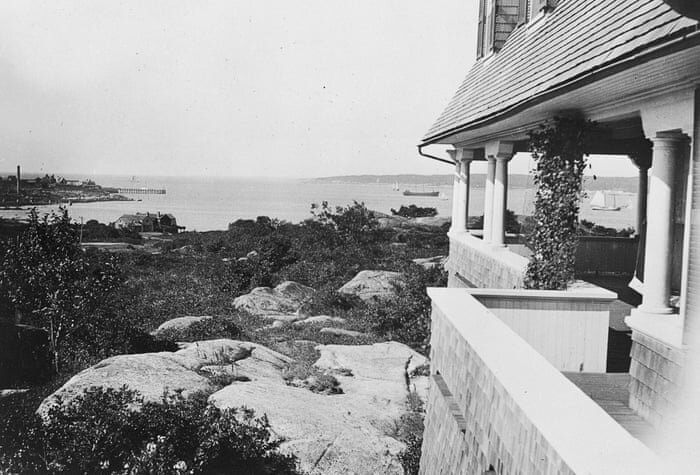Paul Manship's Starfield
This article is dedicated to local house historian Prudence Fish, who grew up across the street from the Manships and who taught us about the importance of the Manship residence and barn, and about so much more.
View Across Butman Pit, 2023. © Tsar Fedorsky.
Since the late 19th century, it has been a tradition of established, successful New York sculptors and their allied artist friends to escape from the heat of the city and head north to the country during the summer months. In 1915, Cornish was one popular spot and the prodigious sculptor Paul Manship, somewhat fresh from his three-year fellowship at the American Academy in Rome and flush with the proceeds from a series of sold-out exhibitions, decided to take his young family to New Hampshire for an extended summer vacation. He was in good company.
Among the many artists, writers, composers, musicians, and architects in residence that summer was the painter and illustrator Maxfield Parrish. Though fifteen years his senior, Parrish and Manship shared common ground—they both had attended the Pennsylvania Academy of the Fine Arts (PAFA), they were highly sought after artists in their disciplines, and they were adventurous. That fateful summer, Parrish and Manship decided to take a road trip together in Parrish’s new automobile to visit colleagues who were on Cape Ann.
Parrish was a good travel guide for Manship as he had shared an Annisquam studio with his father, the painter and etcher Stephen Parrish early in his career. And although they ostensibly came to visit sculptors Anna Hyatt (later Huntington) and Charles Grafly, as well as etcher Gabrielle Clements and painter Ellen Dale Hale, chances are they encountered a goodly number of their New York artist friends as well. This was the era when Cape Ann was becoming a popular destination for art teachers and their students.
Manship and his assistants finishing the plaster model of Prometheus, about 1933.
Despite the growing popularity of this locale among artists, Manship did not return again until 1940 when he was looking for a new place to take his family for the summer. By this time Manship was well known as the pioneer of American Art Deco and his work was considered iconic. His best-known sculpture was the Prometheus Fountain at New York’s Rockefeller Center, and he would become one of the more famous artists who have spent time on Cape Ann. It was painter Leon Kroll who enticed him back with the promise of a community made up of their mutual artist friends, who by this time had deep roots on Cape Ann. In many ways, Manship was just exchanging New York’s social clubs and prestigious associations for Cape Ann’s natural setting. Manship frequently met many of Cape Ann’s summer residents at the Century and National Arts Clubs, the American Academy of Arts and Letters and the National Academy of Design during the rest of the year. His day books are punctuated with references to lunch and dinner gatherings with them at New York clubs, with the telling, rare notation that “dinner” was at “home.” In contrast, when Manship and his family were in residence on Cape Ann, he rarely had appointments. And, except for brief trips out of town on business, his calendar book was blank from June or July into September and sometimes October.
The wilds of Cape Ann suited Manship’s temperament and allowed him to resume the summertime interests he shared with his brothers in his youth, such as boating, fishing, and hunting. On Cape Ann, it was Manship’s artistic kin and the latter’s families that provided opportunities to enjoy outdoor pleasures. One of Manship’s favorite activities was hunting for food in the forests nearby, with berries and mushrooms being particularly well-documented forage. Manship family photos from their first three summers on Cape Ann record how they routinely pursued outdoor pastimes with their New York friends. There are photographic views of them swimming in quarries and in the ocean at Folly Cove, picnicking and barbequing, and dancing a Finnish hop in a lush landscape.
Select an image to view full size with caption
The ties between the Manships and the families of George Demetrios and Walker Hancock were especially strong. Manship, Demetrios and Hancock had studied at various times under the late Folly Cove resident and sculptor Charles Grafly. They participated in a close-knit community of working artists, fishermen, and former quarry workers who were now pursuing other occupations and lived within walking distance of each other at the north edge of Gloucester. Not before long, Paul’s eldest daughter Pauline and the brother of Saima Hancock, Ilmari “Jimo” Natti, fell in love and got married. Manship and Hancock were not just friends and colleagues, in July 1943 they were now relatives. With the prospect of grandchildren and frequent trips to Cape Ann to spend time with his daughter’s new family, Manship was determined to secure a permanent summer residence with a quarry on Cape Ann.
On April 8, 1944, Manship purchased just over 15 acres of land in Lanesville, a village of Gloucester, MA from the bankrupt Rockport Granite Company for $2600. The property encompassed two large former granite quarries, Canney Quarry and Butman Pit, which were now filled with water. That same April day, Manship also bought a house that was slated for demolition, the 1863 Story House at Pigeon Cove, for $600. Over the next year, Manship had this 2 ½-story house disassembled and built a new 1 ½ -story summer residence with an expanded footprint for his family.
Manship hired two Lanesvillian artisans—his soon-to-be neighbor, Eino Natti (who was also his son-in-law’s brother) and local housewright and carpenter Bill Niemi—for the job of taking the house apart and reconstructing it on his new property. Although this practice of deconstructing and rebuilding was not uncommon, what was unusual was that the next year, in 1945, Manship had to ask the US War Department for permission to purchase a former ox barn at Gloucester’s Hodgkin’s Cove which he intended to reconstruct on his new property as a studio. He paid $800 for the 1856 Berry barn and was able to justify the use of these scarce building materials as a wartime effort since he would be modeling war memorials in the newly assembled structure. Manship was creating a place where he could work and play from late Spring into the Fall.
View of the Lanesville Congregational Church through the grape arbor, about 1964.
“I hope to have grape vines cover the terrace to the latticed overhead trellis. So, we can sit in the summer in the cool of the vines—drink wine and enjoy the view!” —Paul 2/21/1947
Manship imagined his property along the lines of a country estate. With the help of his architect friend, Eric Gugler, he cultivated parts of the property as formal gardens with landscape features and used the property as a showroom from which to sell his work. Manship often hosted parties for his neighbors and visiting out-of-town patrons who would sometimes return home with a new garden sculpture. He covered an open-lattice gazebo he had designed himself with espaliered pear trees and grew high bush blueberries around the perimeter of his residence. His objective was to be able to walk right outside the kitchen and put the berries directly into his breakfast bowl. The quarries were also stocked with fish, and he researched how best to balance the distinct species to ensure that the food chain remained sustainable.
Manship even gave his estate a name: Starfield. Manship reveled in the abundance of stars that populated the night sky in Lanesville. He is known to have woken his family in the middle of the night so they might accompany him outside while observing the celestial dance above. Lanesville’s former “dark sky” status, a condition defined by the absence of light pollution obscuring the nighttime sky, may well have influenced this choice of name for his property. Another more poetic possibility is suggested with his commitment to preserving the property’s natural firefly habitat. Manship waited to mow his meadow until the end of July, thereby ensuring that the resident fireflies had the proper environment to go through their life cycles. Now imagine you are walking through a meadow at night with fireflies twinkling all around you, and you are indeed in a Starfield.
Manship and his family returned to Cape Ann every summer until his death, except in 1950 when he was abroad working on sculpture for American cemeteries in Europe and Isabel was in Rome visiting their youngest children. After Paul’s death, the family continued to use the Lanesville residence as home base in summer and briefly at other times throughout the year. With his mother’s passing, Manship’s son, painter John and his daughter-in-law, sculptor Margaret Cassidy inherited the property. Then in August 2017, the Manship Artists Residency purchased the property from Margaret Cassidy Manship’s estate and began inviting artists-in-residence in May 2019. Thus, Manship’s Starfield has always been a haven for artists. Today, the Manship Artists Residency is continuing the legacy of the Manship family and contributing to the revival of the artistic community that once flourished at Starfield while giving time and space to artists to explore, be inspired, and create while nurtured by the serene surroundings of Cape Ann.
Acknowledgements
All historic photographs are from the Manship Family Archives, courtesy of the Manship Artists Residency, with thanks to the former and current Manship Archivists, Sharon Spieldenner and Peggy Calkins, respectively for their dedication to making this resource accessible to everyone.
CONTEMPORARY IMAGES
Select an image to view full size with caption
Photo credit: ©Sash Ludwig.
Rebecca Reynolds co-founded the Manship Artists Residency in November 2015 to save an historic and environmentally-significant property as an international, interdisciplinary artists residency to continue the legacy of this place as one for artists and art making. An art historian specializing in American sculpture, Reynolds first worked in museums and then in unconventional settings, introducing signature programming that connects contemporary artists with the history of a place and which creates meaningful cultural experiences. Reynolds began the outdoor sculpture path at Forest Hills Cemetery in 1998 and initiated the Lantern Festival in 1999. In Spring 2022, she received an achievement award from the National Sculpture Society for years of service to the field and for advancing the work of sculptors. At Manship Artists Residency, Reynolds nurtures and supports artists working in many media, scientists, and creatives who challenge us and who transform the way we see the world.


































